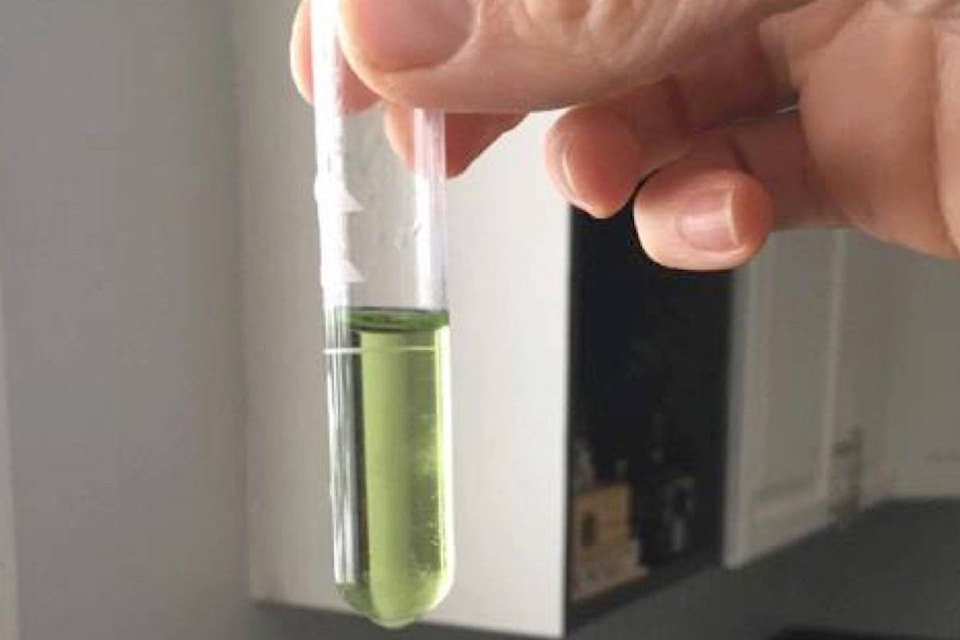According to the Village of Burns Lake, ammonia levels found in the Burns Lake’s tap water are not a health concern.
Burns Lake resident Kara Wall has recently raised concerns over local water quality on social media. Wall says she became concerned after noticing that her fish got sick.
“I couldn’t understand what was happening until I tested my [fish tank] water for ammonia,” she said. “It came up positive right away at 0.75; I kept changing the water, but it wasn’t helping - it was just as bad every time or worse than before.”
She then decided to also test her tap water, which showed the same levels of ammonia as her tank.
“It is quite terrifying knowing I am cooking food for my children with, as well as serving to my other pets, water that was killing my freshwater fish,” said Wall. “As a homeowner, it is disheartening to know how much we are paying for water that is not safe or clean.”
According to Canadian Drinking Water Guidelines, however, no health affects have been associated with the ingestion of ammonia, which is naturally produced in the body and efficiently metabolized in healthy people. Therefore guidelines have not been established for ammonia levels in tap water.
Although the Village of Burns Lake does not routinely test for ammonia, ammonia levels were tested as part of a manganese pilot program that was conducted in the summer of 2017. Almost all 16 laboratory reports indicated a level of 0.03 mg/litre of ammonia, which Burns Lake director of public works Dale Ross considers “extremely low.”
When asked about the local resident who found levels of 0.75 in her tap water, Ross said some cross contamination between the fish tank and tap water could have occurred when she conducted the test.
“Fish produce ammonia, for example, so maybe she’s testing the fish tank and then using the same beaker to test her tap water,” said Ross.
“At this point, there are no issues with our water, except for manganese, and we take this very seriously,” he added. “It’s our responsibility to ensure that we have safe water; we also live in this town.”
The village currently has two operators who are certified in the day-to-day operations of water and sewer utilities. Part of their responsibility is to collect water quality samples, which are then sent to an independent laboratory for analysis.
This laboratory performs tests of 37 metals that naturally occur in drinking water, as well as general parameters of P.H. nitrates, nitrites, solids and anions. These reports are then forwarded to Northern Health for review and recommendations.
“All lab reports to date pass the parameters as set out in the Canadian Drinking Water Guidelines, with the exception of manganese,” explained Ross. “Manganese has an aesthetic objective which is not health related.”
Manganese, which is responsible for the discolouration of tap water sometimes seen in Burns Lake, is one of the most frequent complaints the village receives from the public. Village staff has been working to address this issue for the past 16 months.
An unexpected surplus in the Fifth Avenue water tower project allowed the village to speed up its water treatment project, which would filter the manganese in the village’s water systems.
The first step in this process was to set up and conduct an independent study and manganese pilot program, where a small plant was set up for six months to help determine which treatment process would best suit the village. A hydrogeological assessment was also conducted to determine the condition of the current three wells and any issues that may be associated with them.
The final step will be to apply for a grant in the spring of 2018 to construct a new water treatment plant, which is expected to cost approximately $3 million. If the village is successful in receiving the grant, work would commence soon after funding is completed.
According to the Ministry of Environment, if there’s thought to be contamination in a drinking water source, the public should bring this to the attention of the Conservation Officer Service (COS), who could initiate an investigation. The COS can be reached at 1-877-952-7277.
@flavio_nienow
newsroom@ldnews.net
Like us on Facebook and follow us on Twitter.
